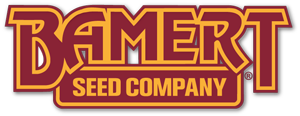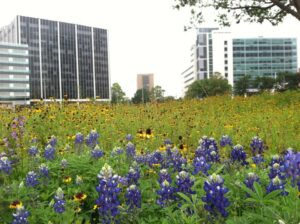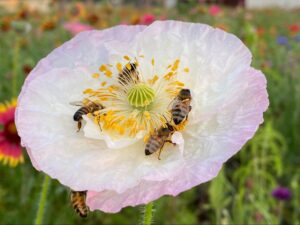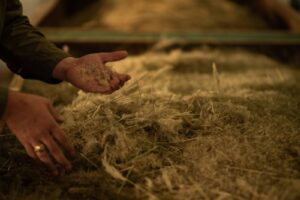 While reclamation projects have no set window or time frame, they are more frequent in the spring. A successful planting and establishment is necessary to move on to your next project. This makes buying and planting high-quality seeds a crucial component of successful reclamation. However, choosing the right seeds can be confusing, especially when you’re looking at terms like bulk pounds and Pure Live Seed (PLS).
While reclamation projects have no set window or time frame, they are more frequent in the spring. A successful planting and establishment is necessary to move on to your next project. This makes buying and planting high-quality seeds a crucial component of successful reclamation. However, choosing the right seeds can be confusing, especially when you’re looking at terms like bulk pounds and Pure Live Seed (PLS).
At Bamert Seed, we understand the significance of making informed decisions about seed purchases. We’re here to simplify PLS and highlight its importance for your projects, ensuring you achieve the ecological balance and project success you aim for.
What is Pure Live Seed (PLS)?
Pure Live Seed represents the fraction of your seed order that’s viable and capable of germination. It’s calculated from a seed lot’s purity and germination rates, including dormant seeds. Understanding PLS is crucial because it directly influences the success rate of your planting efforts. Unlike bulk pounds, which include inert matter and non-viable seeds, PLS focuses on the quality and efficacy of the seed, ensuring you’re investing in the potential for growth. In short, the cheapest seed might be cheap for a reason.
Why PLS Matters:
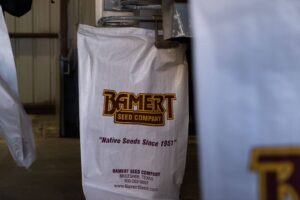 Purchasing seeds based on PLS rather than bulk weight ensures you pay only for viable seeds, making your investment more cost-effective and your reclamation projects more successful. It allows for accurate comparisons and informed decisions between seed lots, ensuring you receive the best value and performance from your purchase.
Purchasing seeds based on PLS rather than bulk weight ensures you pay only for viable seeds, making your investment more cost-effective and your reclamation projects more successful. It allows for accurate comparisons and informed decisions between seed lots, ensuring you receive the best value and performance from your purchase.
Seeding Rate: The Key to Successful Establishment
The reason Pure Live Seed (or PLS) is so important, is because of seeding rate. Seeding rate, or the amount of seed planted per unit area, is one of the simplest ways to increase your chances of a successful establishment (assuming you follow guidance on how to plant your project for reclamation success).
When you select seeds based on their PLS percentage, you’re ensuring that your seeding rate accurately reflects the number of viable seeds, optimizing your project’s chances for successful establishment.
This precision allows for the efficient use of resources and maximizes the ecological benefits of your planting efforts. At Bamert Seed, we provide detailed recommendations on seeding rates based on PLS, ensuring that each project is tailored for optimal growth and sustainability. By focusing on PLS, we ensure that every seed has the potential to contribute to your project’s success, eliminating guesswork and maximizing the impact of your investment in native seeds.
The Bamert Seed Approach
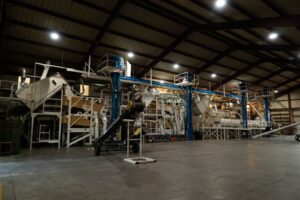 At Bamert Seed, we emphasize the importance of PLS in every recommendation we make. Our specialists, who are not just salespeople but trained ecologists, understand that the right seed selection is pivotal. We pride ourselves on offering seeds with high PLS percentages, ensuring your projects are set up for success from the ground up.
At Bamert Seed, we emphasize the importance of PLS in every recommendation we make. Our specialists, who are not just salespeople but trained ecologists, understand that the right seed selection is pivotal. We pride ourselves on offering seeds with high PLS percentages, ensuring your projects are set up for success from the ground up.
Calculating Pure Live Seed (PLS)
The formula for calculating PLS might seem complex, but it’s straightforward when broken down. This knowledge empowers you to make informed decisions and ensures your project’s needs are precisely met.
Here is a simple way to calculate PLS:
PLS is essentially the percentage of purity multiplied by the percentage of (germination + dormant seed). In mathematical terms, PLS = % purity X (% germination + % dormant seed).
For example, imagine you’re purchasing a bag of little bluestem seeds weighing 100 bulk pounds from seed dealer “X”. The purity test indicates that 90% of the contents are actual little bluestem seeds, with the rest being inert material, weed seeds, or seeds of other crops. This batch also shows a 60% germination rate and an additional 10% of seeds are dormant but still viable. To find out the total percentage of viable seeds, you add the germination and dormant seed percentages together, giving us 70% viable seeds. To find the PLS, you multiply the purity percentage by this viability percentage.
In our scenario: 90% (purity) multiplied by 70% (total viability) equals a PLS of 63%. This means in your 100-pound bag, 63 pounds are seeds that are viable and capable of growing, while the remainder consists of material that won’t contribute to your seeding efforts.
As you can see, The only way for you to know the value of each lot is to know the cost per PLS pound of seed.
Choosing Bamert Seed:
Why choose Bamert Seed for your native seed needs? It’s simple. We control every aspect of our seed production process, from planting to shipping. This control allows us to guarantee the highest PLS percentages, ensuring you get the most viable, effective seeds for your specific project requirements.
Ready to ensure your project’s success with high-quality, PLS-based native seed solutions? Contact Bamert Seed today at 806-639-5232 for a consultation or quote. Let us help you select the right seed, with the right viability, for the right outcome.
Pure Live Seed (PLS) is more than a metric; it’s a standard of quality and commitment to project success. At Bamert Seed, we’re dedicated to providing our customers with the best possible products and services, ensuring your projects thrive. From high-quality seed to planting guidance, we are here to make your reclamation project as successful as possible.
